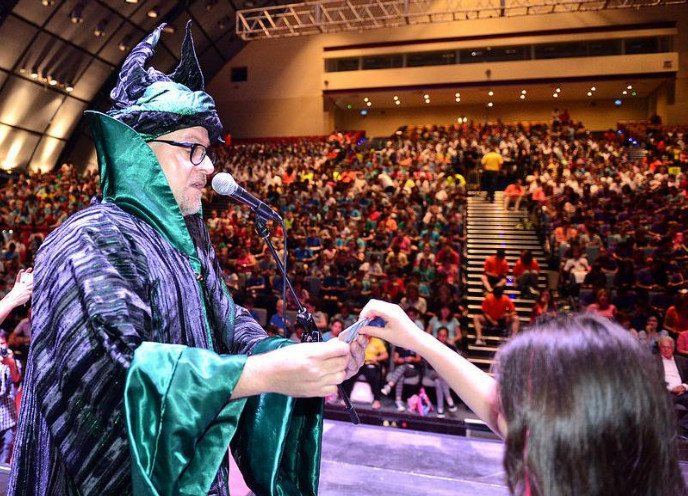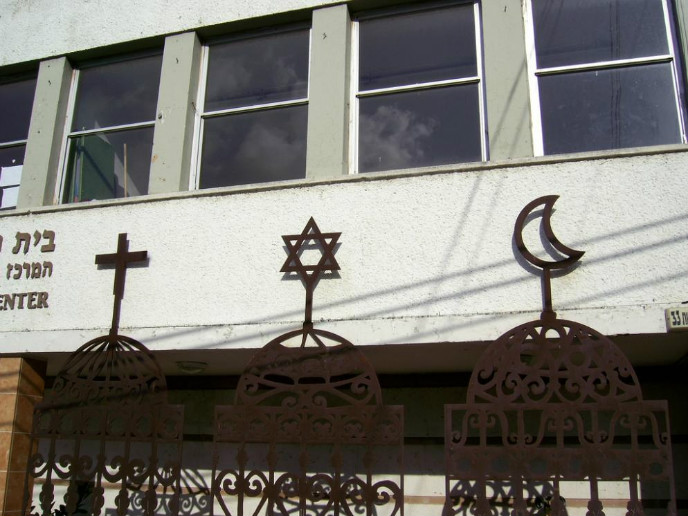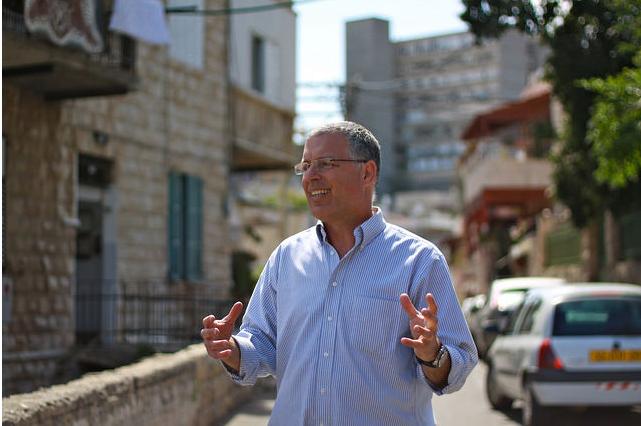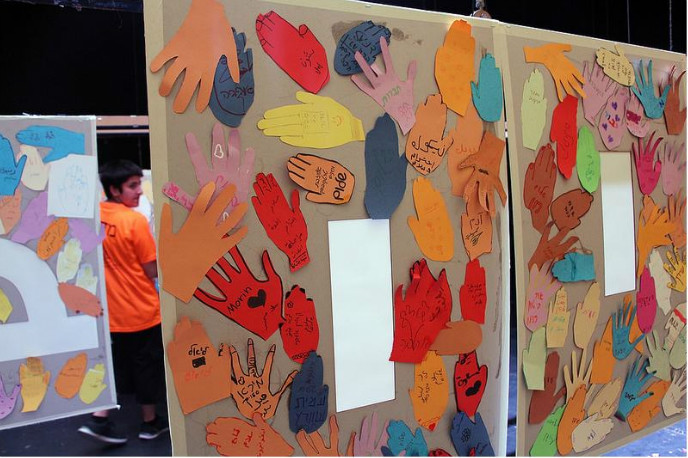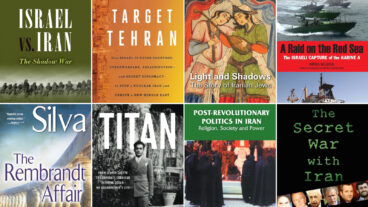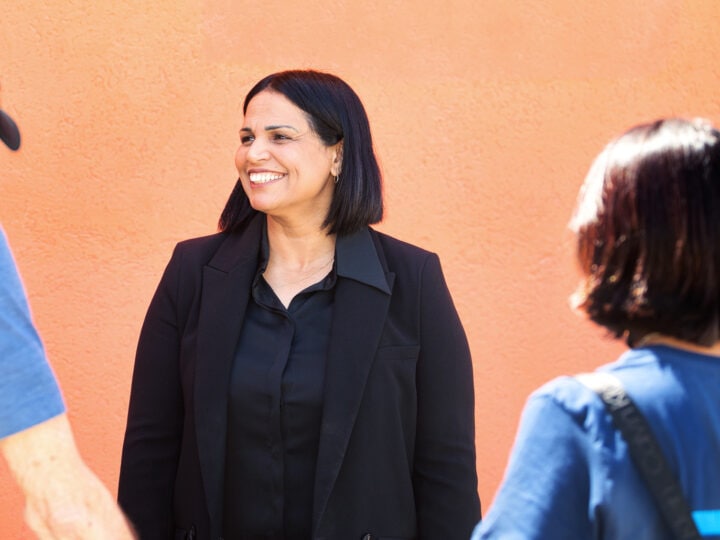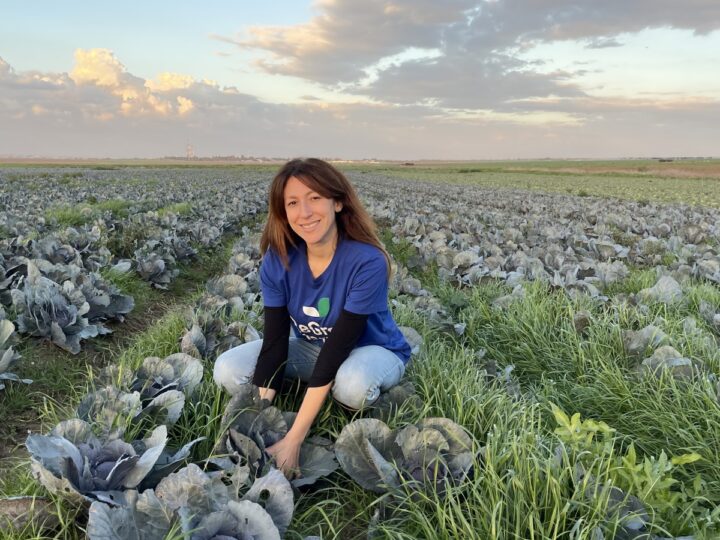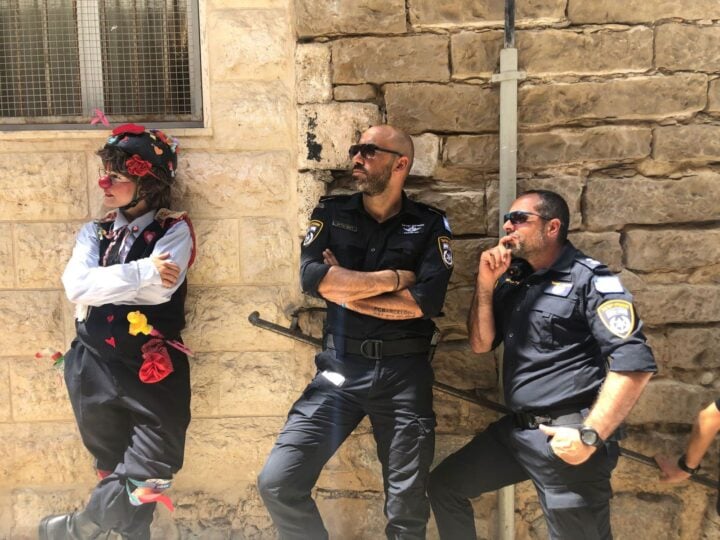On June 1, 1,573 Jewish, Christian and Muslim schoolchildren from across Haifa helped set the world record for the largest magic lesson. The students, representing every school in the city, participated in “Haifa Magic for Peace,” led by Israeli magician Cagliostro.
Beating the previous world record held by Scottish magician Kevin McMahon from 2012, Haifa Magic for Peace was extensively covered in the Israeli media and helped put the sponsoring organization, the Beit HaGefen Jewish-Arab Culture Center, in the spotlight.
“Magic was a good tool to bring together nearly 1,600 Jewish and Arab fifth- and sixth-graders and their teachers,” says Beit HaGefen Cultural Director Hila Goshen. “The vice mayor told the children this day was like an oasis in the middle of a desert of racism and fear.”
Beit HaGefen is not a new kid in town. The nonprofit center was inaugurated in 1963 as a common meeting ground for Haifa’s Jewish and Arab populations, offering educational, cultural and tourism activities to a local, national and international audience. The municipality and citywide school system actively support the center’s activities.
Perhaps the best-known Beit HaGefen program is the annual interfaith Holiday of Holidays Festival staged every Thursday through Saturday in December. Tourists and Israelis flock to the Wadi Nisnas neighborhood, right next to the center’s main building, to celebrate Hanukkah, Eid-Al-Adha and Christmas through a street festival featuring ethnic music, art and food.
“We honor everyone who lives here,” says Beit HaGefen Executive Director Asaf Ron, who frequently goes on speaking tours abroad to publicize the center’s efforts to foster dialogue, neighborliness and tolerance. “We’re not a holy site specifically, but we have people who want to live harmoniously and the feeling is one of pluralism.”
Even if they don’t enjoy the same fanfare, it’s the day-to-day events at Beit HaGefen that make the most lasting inroads.
Getting to know you
“One of our daily missions is to have two classes from the different societies meet here,” Goshen tells ISRAEL21c. “Every school in Haifa has some connection with Beit HaGefen.”
Beit HaGefen promotes intercultural ties and interrelations through programs for all ages, including leadership training, concerts, theater, a library and an art gallery that showcases works by all sectors of Haifa society.
“The most important thing is that our programs should speak to everyone with a common theme that will invite Jews and Arabs, Hebrew- and Arab-speakers,” says Goshen, who dreams of creating a cooperative of Jewish and Arab street artists. “Not everything I plan is in both languages, but I always have things to involve the two societies with the goal of getting to know each other better.”
Beit HaGefen also offers tours – available in Hebrew, English, Spanish and German– along the art routes in Wadi Nisnas, the world-famous Bahá’í Gardens, Stella Maris, the German Colony, the Ahmadi Mosque and other Haifa landmarks exemplifying a message of acceptance, tolerance and respect.
In addition to programs planned and publicized by the center’s cultural and educational staff, sometimes very successful ventures come from the public, Goshen notes.
One such endeavor is the Jewish-Arab Youth Club that began three years ago at the initiative of nine 15- and 16-year-olds. Today this club has 140 members and professional facilitators. Recently, a group of eighth-graders asked Beit HaGefen to open a similar club for younger kids.
“These teenagers were looking for a place to hold a Jewish-Arab youth club, and had knocked on other doors before they came to us and we said yes,” Goshen relates.
“The first year they attracted another four or five kids, and ran the club themselves once a week around cultural activities like movies, with a small budget from us and the Rotary Club. The second year we saw they needed us to help facilitate it because it grew so much. It’s an amazing group and still wants to grow more. I can say for sure these kids would never meet if not for this option.”
The mass card trick performed under Cagliostro’s wand at Haifa Magic for Peace also had a specific message. The children were given packs of eight cards, and wrote words such as “hope,” “friendship,” “coexistence” and “dialogue” on blank playing cards. Then each asked someone sitting nearby to choose one card and add it to the eight-card deck. Cagliostro threaded a small wooden wand through holes at the top of the cards, said the magic words, and the card that the person had chosen mysteriously flew out of the deck.
“It was really interesting, and the fact that it was magic for peace made it all the more special,” 10-year-old Shira told The Times of Israel. “I believe that peace is in our hands and working together as one I really felt that it was within reach.”
The program continued with an arts-and-crafts project to cement that very idea. All the kids contributed to a huge “It’s in our hands” mural in Hebrew, Arabic and English.
For more information, click here.




